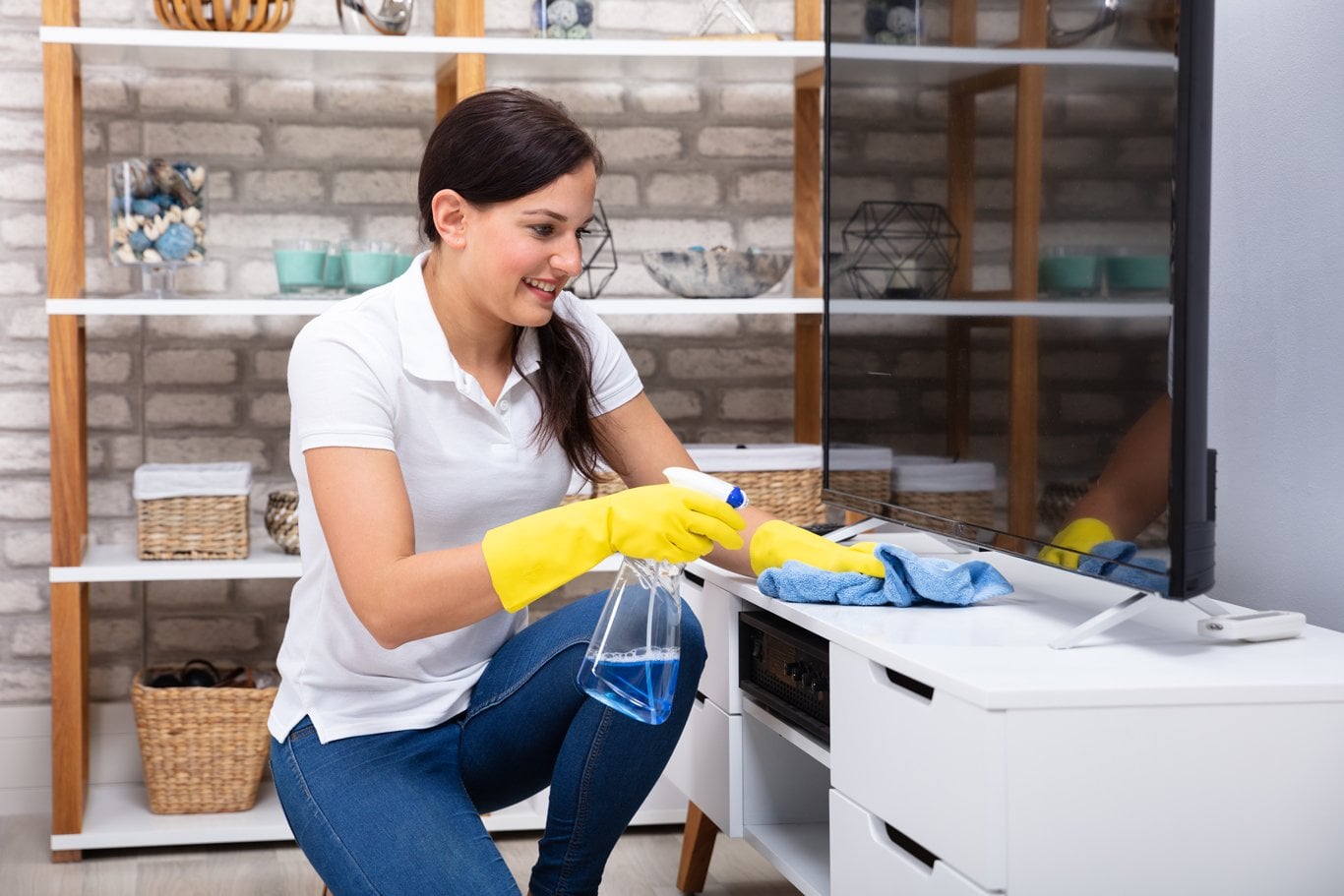Keeping hospitals clean is crucial for patient safety. The CDC reports that every day, 1 in 31 patients gets an infection from the hospital. This guide shows how to use “Hospital Cleaning Best Practices” to fight these infections.
Keep reading for key steps and tips.
Key Takeaways
- Clean high-touch areas often with strong germ killers. Use tools like microfiber mops and clothes to take away more germs.
- Use the right disinfectants, such as EPA-approved ones, for each surface. Add UV-C light to cut down on sickness by up to 37%.
- Check rooms daily using a cleaning checklist. Wear protective gear and dispose of trash and medical waste the right way. Wash hands a lot.
- Train staff on how to clean safely and well. Follow strict rules about cleaning in places like intensive care units.
- Keep the air clean with HEPA filters and check water quality often in hospitals and nursing homes to keep everyone healthy.
Step-by-Step Cleaning Procedures
To ensure cleanliness and safety, hospitals follow detailed cleaning steps. They target areas most touched by hands first, then use powerful germ killers to remove bacteria and viruses.
High-Touch Surface Prioritization
High-touch surfaces in hospitals, like door knobs and light switches, get a lot of use. They must be cleaned often to stop germs from spreading. Studies show these areas are not always cleaned well.
A two-year study found 90.5% of door knobs and 95.2% of light switches were disinfected right.
Use cleaning tools that work well against germs for these spots. Microfibre cloths can take away more than 99.7% of microorganisms from surfaces they touch. Microfibre mops help keep different areas from getting each other’s germs, making cleaning safer and faster.
So, focus on cleaning high-touch surfaces daily or even more often with the right tools to fight infection in hospitals better.
Proper Use of Disinfectants
Clean hospitals fight infection. This means using the right cleaners properly. Use only EPA-approved hospital-grade disinfectants. Each surface has its rules for cleaning agents. Know these rules.
Rubbermaid’s tools help – like microfiber products and carts. These are made for healthy environments. In nursing homes, use milder sanitizers, not harsh chemicals. Adding UV-C light to bleach or ammonia cuts sickness by 32%-37%.
Follow these steps for safety and health in hospitals and care facilities.
Infection Control Measures
Infection control measures stop diseases from spreading in hospitals. Regular cleaning and using strong cleaners play a big role.
Regular Cleaning and Disinfection
Regular cleaning and disinfection are key in stopping the spread of germs in hospitals. They keep both patients and healthcare workers safe.
- Clean medical devices after every use. This stops germs from passing between patients.
- Choose disinfectants wisely. Use ones that work against a wide range of germs.
- Focus on high-touch areas like door handles, light switches, and elevator buttons. Clean these spots several times a day.
- Follow a cleaning checklist for each room. Make sure nothing gets missed.
- Dispose of trash and medical waste properly to avoid contamination.
- Wear personal protective equipment (PPE) while cleaning to stay safe from harmful germs.
- Wash hands often, especially before and after cleaning rooms. Hand hygiene is crucial in infection control.
- Use high-efficiency particulate air (HEPA) filters to clean the air in patient areas.
- For nursing homes, clean more deeply because the people living there get sick easily.
- Corporate Cleaning & Facility Services in Grand Rapids, MI, knows how to clean healthcare facilities best.
This plan helps stop infections from spreading in hospitals and keeps everyone healthier.
Advanced Cleaning Protocols
Advanced cleaning protocols in hospitals are critical. They keep both patients and healthcare workers safe from infections. Here’s how to do it right:
- Choose the right disinfectants. Bleach and ammonia can cut illness chances by up to 37%. Add UV-C emitting devices for an extra clean.
- Focus on high-touch areas. Doorknobs and light switches need frequent cleaning—as much as 90% of them aren’t clean enough.
- Use spacious carts for supplies. This way, staff can carry more items and cut down on trips to restock.
- Stick to a cleaning schedule. Regularly disinfect all areas, but pay extra attention to intensive care units and emergency departments.
- Train staff well. Everyone must know how to use cleaning products safely and effectively.
- Keep personal protection equipment ready. Gloves, face masks, and other gear protect against bloodborne pathogens.
- Follow infection prevention rules closely. Handwashing with soap or using hand sanitizers helps stop germs from spreading.
- Dispose of waste properly. Especially biohazardous waste—it needs careful handling.
- Check air and water quality often in care facilities. Good ventilation systems also matter a lot for keeping the air clean.
10. Use self-monitoring tools like UV-C devices to make sure every spot is disinfected.
By following these steps, hospitals can fight off infectious diseases better and keep everyone safer.
Conclusion
Effective hospital cleaning keeps patients safe. It stops germs from spreading. Every room needs daily care with strong cleaners that the EPA approves. Training for cleaners is critical to stop germs from moving around.
Singapore shows us how with its guidelines on keeping hospitals clean. This guide makes sure every patient stays in a healthy place, free from harmful germs.
FAQs
1. What are the best practices for hospital cleaning services?
Best practices include regular disinfecting, sterilizing of rooms, and proper waste management. Adherence to these protocols helps prevent the spread of communicable diseases.
2. How can healthcare-associated infections be minimized in a care facility?
Infection prevention and control measures such as isolation of patients with infectious illnesses, use of antimicrobials, and hand washing can minimize healthcare-associated infections.
3. Why is it important for medical professionals to maintain hygienic conditions in operating rooms?
Maintaining hygienic conditions reduces the risk of secondary infections during surgical procedures. It also controls exposure to blood borne pathogens like hepatitis.
4. Can housekeeping contribute towards infection control in long-term care facilities?
Absolutely! Regular cleaning, laundry services, and maintaining good air quality are vital parts of housekeeping that aid in infection control.
5. What role does occupational safety and health administration play in hospital cleanliness?
The Occupational Safety and Health Administration sets guidelines on handling hazardous materials, waste disposal procedures, etc., which hospitals must comply with for effective disease control.
6. How can adherence to hygiene standards prevent hospital acquired infections?
Adherence involves following strict cleaning schedules, using appropriate disinfectants on surfaces where microbes may thrive, and considering dust as a potential carrier – all helping prevent hospital-acquired infections.



